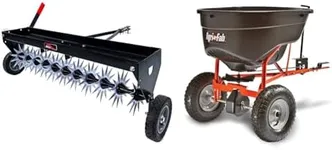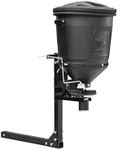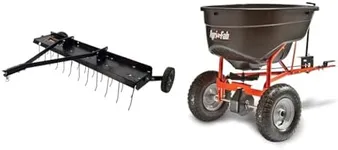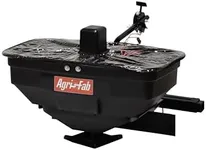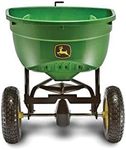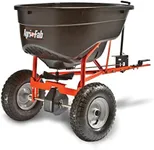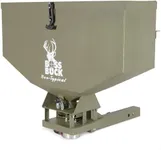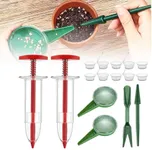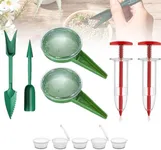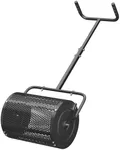Buying Guide for the Best Pull Behind Spreaders
Pull-behind spreaders are essential tools for anyone looking to evenly distribute seeds, fertilizer, or other materials over a large area. They attach to the back of a lawn tractor or ATV, making the task of spreading much easier and more efficient. When choosing a pull-behind spreader, it's important to consider several key specifications to ensure you select the best model for your needs. Understanding these specs will help you make an informed decision and get the most out of your purchase.CapacityCapacity refers to the amount of material the spreader can hold at one time, usually measured in pounds or cubic feet. This spec is important because it determines how often you will need to refill the spreader. Smaller capacities (up to 50 pounds) are suitable for small to medium-sized lawns, while larger capacities (over 100 pounds) are better for larger properties or commercial use. Choose a capacity that matches the size of the area you need to cover to minimize the number of refills and save time.
Spread WidthSpread width is the width of the area that the spreader can cover in one pass, typically measured in feet. This spec is crucial because it affects how quickly you can cover a given area. Narrow spread widths (up to 6 feet) are ideal for precise applications in smaller areas, while wider spread widths (over 10 feet) are better for covering large areas quickly. Consider the size and shape of your lawn or field to determine the optimal spread width for your needs.
Material TypeThe material type of the spreader refers to the construction materials used, such as plastic or metal. This spec is important for durability and longevity. Plastic spreaders are lightweight and resistant to rust, making them suitable for occasional use and lighter materials. Metal spreaders, often made of steel, are more durable and can handle heavier materials, making them ideal for frequent use and tougher conditions. Choose a material type based on how often you plan to use the spreader and the types of materials you will be spreading.
Hopper DesignThe hopper design refers to the shape and features of the container that holds the material. This spec is important for ensuring even distribution and ease of use. Hoppers with a conical or funnel shape help ensure a consistent flow of material, reducing clogs and ensuring even spreading. Some hoppers also have covers to protect the material from moisture and wind. Consider a hopper design that promotes smooth operation and protects your materials, especially if you live in an area with variable weather conditions.
Control MechanismThe control mechanism refers to how you adjust the flow rate and spread pattern of the material. This spec is important for precision and ease of use. Basic models may have a simple lever or dial, while more advanced models offer electronic controls or remote operation. If you need precise control over the amount and distribution of material, look for a spreader with an adjustable control mechanism. Consider your comfort level with different types of controls and the level of precision you need for your tasks.
Tire TypeTire type refers to the kind of tires the spreader uses, such as pneumatic (air-filled) or solid rubber. This spec is important for maneuverability and stability. Pneumatic tires provide better traction and a smoother ride over uneven terrain, making them ideal for larger, rougher areas. Solid rubber tires are maintenance-free and suitable for smaller, flat lawns. Choose a tire type based on the terrain you will be working on to ensure smooth operation and ease of movement.
